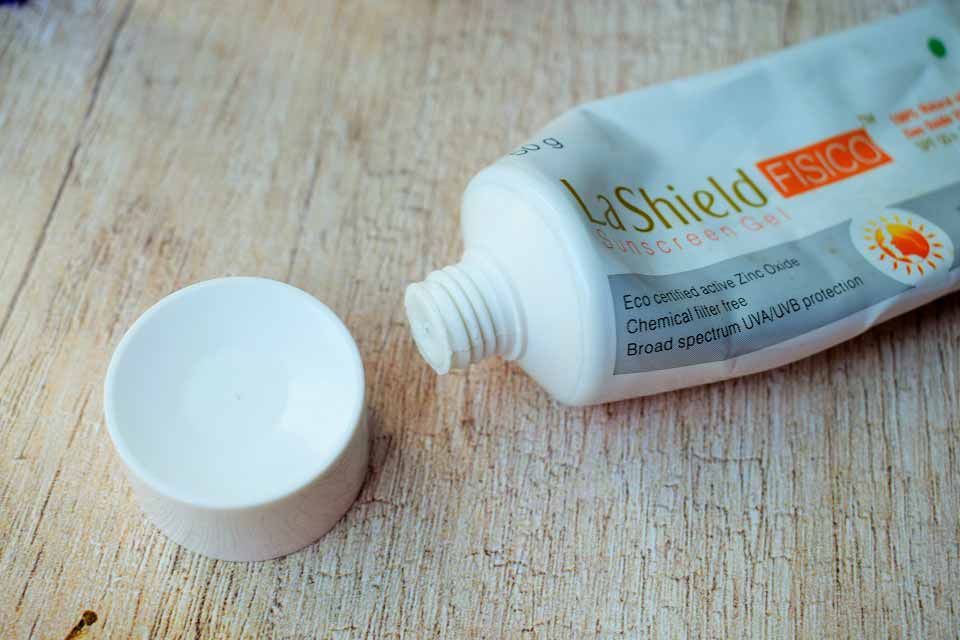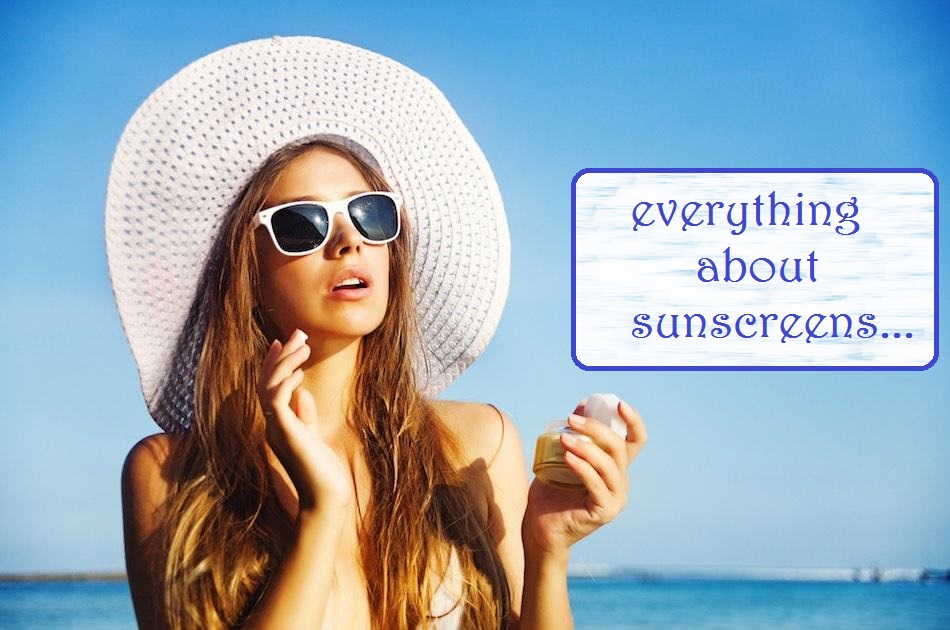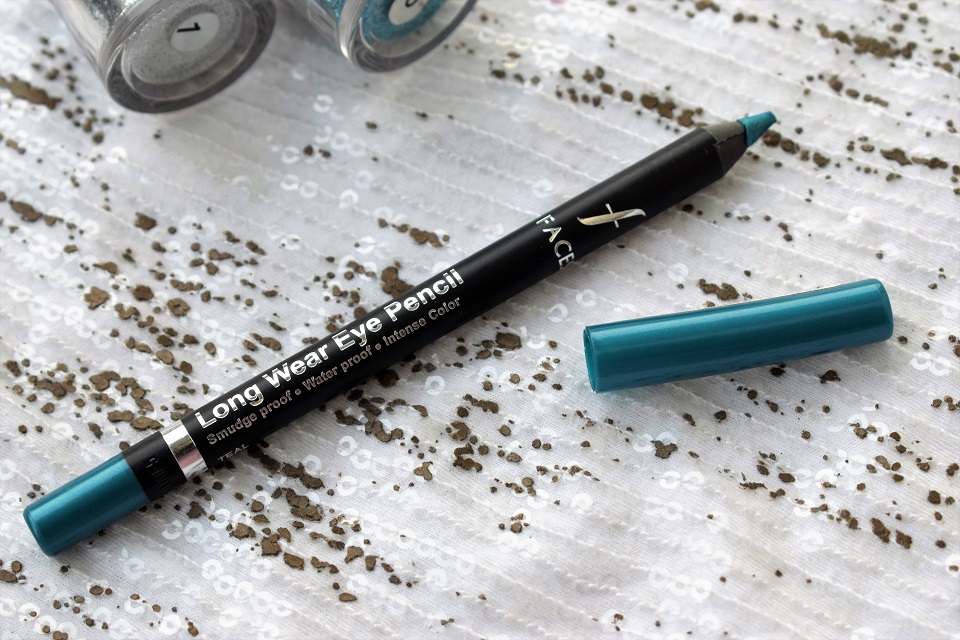Everybody knows that you must apply sunscreen. But not everybody understands the basic terms of sun protection. What exactly is sunscreen made up of? How much sunscreen should be used? What is the basic difference between a sunscreen and a sunblock? What is a physical and a chemical sunscreen? How to choose a sunscreen based on your skin type? What is SPF? What is the minimum SPF value that you should wear? Everything about sunscreen and sunblock that you must know is provided here in this article.
What is Sunscreen?
Sunscreen is a combination of natural or chemical ingredients in the form of cream, lotion, gel, spray or any other kind of topical form which protects your skin from sun rays. The sun rays that are harmful, ultraviolet rays which can bring premature ageing, age spots, dullness, sunburn & tanning to your skin. On average, only 7 minutes of exposure of skin to the sun rays can tan it and damage it in terms of premature ageing.
Sunscreen VS Sunblock
Sunscreen & sunblocks go in parallel. A sunscreen is mostly a chemical composition for sun protection while a sunblock physically blocks sun rays to harm the skin. A sunblock is mostly thicker in consistency than a sunscreen.
If you have to undertake outdoor activity that involves being in the sun and sweating or swimming, chemical sunscreen is definitely going to protect you better than a sunblock. A sunblock creates a physical barrier on your skin. Sweat/ water can easily disrupt this barrier.
It is important to cover your skin fully with sunscreen or sunblock to stay protected. Read more to know how much sunscreen/sunblock you should use.
| Sunscreen VS Sunblock | ||
|---|---|---|
| Sunscreen | Sunblock | |
| Composition | Chemical | Creates a barrier on the skin against the UV rays. |
| Ingredients | Aminobenzoic Acid, Dioxybenzone, Oxybenzone etc. | Zinc Oxide, Titanium Oxide and other minerals |
| Mechanism | Absorbs UV rays | Reflects UV rays |
| Consistency | Thin like a lotion, moisturizing | Generally, thick giving white cast/ matte finish |
| Activity level | Suitable for Swimming, physical activities that involve sweating | Not suitable for activities involving sweat/water. |
| Suitable For | Dry-Normal | Oily-Combination, Acne Prone and sensitive |

When should I wear Sunscreen?
Every day, all year round especially when you are out. Even if it is a cloudy day, 80% of the Sun’s ultraviolet rays will penetrate your skin while you do not know it. If you are in water, sand or snow, protect yourself with high SPF as these 3 tends to reflect sun rays back to your skin. That is the reason you always get tanned after returning from a ski or vacation on the beach.
What Is SPF?
SPF stands for Sun Protection Factor. It is the amount of protection that you get from sunscreen to filter out ultraviolet rays of the sun. The SPF level can vary between 1-90. It is recommended that you wear at least SPF 30 if you are stepping out in the sun.
SPF 15 can filter out 93% of ultraviolet rays, SPF 30 can filter out 97% of ultraviolet rays while SPF 50+ can protect your skin from 98% of ultraviolet rays. No, 100% protection is still not viable.
What is rating PA in a Sunscreen?
The modern day’s sunscreens come with a PA followed by plus signs (PA ++). Ever wonder what does this denote? PA stands for Protection of UVA, while SPF denotes the protection from UVB rays of the sun.
How Does A Sunscreen or Sunblock Protects Skin?
When you apply topical sunscreen/sunblock on your skin in the form of cream, gel, lotion or spray, it forms a protective layer on the skin. When your skin is exposed to the sun rays, your skin will either absorb or will reflect the rays back. That’s how your skin stays protected.
Why I am Asked To Reapply A Sunscreen
If you get tanned in 10 minutes of sun exposure, then SPF 30 will give you sun protection of 10 X 30 = 300 minutes. It depends upon your skin type & it’s a tendency to get tanned or sunburned. No matter what SPF level you are wearing, you must re-apply it every 2 hours, or immediately after swimming & sweating. While going for swimming it is always a better idea to use water-resistant sun protection, still, reapply it after you are done.
You are asked to reapply sunscreen because no sunscreen can give you full day protection from sun rays. It loses its efficiency to protect your skin after some time.
How Much Sunscreen/Sunblock You Must Apply?
It is advised to apply a coin-sized or more if you are stepping out in the sun to get the optimum level of sun protection. But in case, you use even lesser than this recommended dose, your skin has a risk to get tanned or burned. Despite using a sunscreen, if you are seeing premature ageing on your skin, it means you are not putting enough amount of sunscreen, or not reapplying it whenever required.
Liquid, Lotion, Spray or Powder, which one is the best form of Sunscreen?
A visual study was carried out on a YouTube study in which all these types of sunscreens were tested against their effectiveness.
When you apply sunscreen in the form of a spray or powder, your skin does not get even coverage. There will be some parts of your skin that might receive a lot of the product, while some get very little amount f the sunscreen. You cannot accurately control the amount of the product that every inch of your skin receives.
When you apply, sunscreen/sunblock in the form of a lotion or liquid, you can actually easily make sure that every part of your skin is covered with the product. Hence it is well protected.
A Liquid/lotion sunscreen is always more effective as compared to a spray or powder.

Chemical VS Physical Sunscreen
It is another name for sunscreen & sunblocks. Both are equally good in terms of sun protection.
Chemical Sunscreens work by absorbing sun rays and are mostly formulated with Octylcrylene, Avobenzone, Octinoxate, Octisalate, OxyBenzone, Homosalate or Helioplex. The positive point of chemical sunscreens is the fact that they can be water-resistant. But some of the ingredients present in the chemical sunscreen are little contradictory.
Physical Sunscreens reflects sun rays when the skin is exposed to the sun. They mostly contain natural sun protection ingredients like titanium oxide or zinc oxide as UV filters. Hence we call them Natural Sunscreen. They are not water-resistant and can wear off with sweating but they offer very effective sun protection as well as are not known to irritate skin or have any side effects. But make sure to reapply it if you are just out of water or have been sweating like after playing a sport.
If you have sensitive skin, a physical sunscreen containing Zinc Oxide is considered to be the best. Choose a chemical sunscreen if you need sweatproof & waterproof sunscreen.
While wearing makeup, when should I apply sunscreen?
Sunscreen is a skincare product. So no doubt it must be worn after your moisturizer and before putting up any makeup product. Make sure to allow enough time to your sunscreen to settle down otherwise it would interfere with the makeup application. But even if you are applying makeup, reapply your sunscreen after 2 hours otherwise you won’t be able to protect your skin whole day long.
While applying makeup, don’t rub vigorously, use a sponge and press your makeup into your skin, otherwise, you will rub off your sunscreen.
I know it sounds cumbersome to remove makeup every 2 hours. You can choose makeup with sun protection. Almost every brand offers some sun protection with their makeup products. I would suggest to not rely entirely on makeup for sun protection.
How to reapply sunscreen, if I am wearing makeup?
There is no way around, you must remove your makeup and reapply sunscreen after every 2 hours. I never wear heavy makeup when I have to be in the sun. It’s generally a BB cream and a lipstick, So I can take it off, reapply my sunscreen, and again apply my BB Cream.
If my makeup contains SPF, Can I skip wearing sunscreen altogether?
I would not suggest so. Even if your makeup contains enough SPF like 30 or more than that, and you skip using sunscreen, you won’t be applying as much of the product as much you would apply sunscreen. The amount of sunscreen you put on your skin also determines the sun protection that you get out of a product. You can not be sure that the makeup layer you have put on your skin, will give you an even coverage from the sun.
If you must only use your high SPF makeup and no sunscreen, then you must apply at least a coin-sized amount of the product on your face alone. If you feel it is a lot. Then you can apply the product in steps, layer by layer, allowing enough time to let the BB/CC cream settle into your skin.
How To Choose A Suitable Sunscreen For Your Skin?
The Protection Factor
Of course, it is the primary reason that you should take into account. I feel, anything less than SPF30 is very less and would not protect you for even 2 hours if you are out in the sun. What’s the point of applying such sunscreen. Remember the relation between the SPF & duration? If you get tanned in a time span of 10 minutes then 30 X 10 =300, SPF 30 will protect you for 300 minutes, after which you are supposed to reapply your sunscreen. Also SPF 30 blocks out 97% of the ultraviolet rays, which is a great deal. Any way you can reach out for higher levels of SPF.
With SPF, also try to look out for a paraben-free sunscreen which also contains a lesser amount of chemicals, because in long run they are harmful to the skin. Natural Sunscreens are therefor the no 1 choice of most of the people when it comes to choosing a sunscreen.
The Duration Of Sun Exposure
If you are staying indoors, you can wear as little SPF as SPF 15, but if you are out in the sun for a day, you have to ensure that you are wearing a high SPF with broad-spectrum (protection against UVA & UVB sun rays) and reapply it after every 2 hours or if you are sweating and the sunscreen has been wiped off, apply it immediately.
Type OF Sunscreen
A chemical sunscreen works differently than a physical sunscreen. A chemical sunscreen absorbs the sun rays while a physical sunscreen reflects them back. You need to decide what type of sunscreen you want. The two also vary in consistency & texture. Physical sunscreens are subjected to the coverage & wear tears due to rubbing & sweating too, while the chemical ones do not get affected by it. But both need to be applied periodically.
Also, Sunscreen creams practically give more protection than the sprays since there might be chances that we miss a few spots here and there. If you are wearing sunscreen, still you should try to stay in the shed if possible, between 10 am to 4 pm.
Type Of Your Skin
A physical sunscreen containing Zinc Oxide is considered to be the most suitable for acne-prone, oily or sensitive skin, while most of the chemical sunscreens provide a nice sheer & glowy look to dry skin. It is always advised you should pick a sunscreen based on the type and condition of your skin.
Sensitive & Acne-Prone skin can break out or get rashes from the chemical types of sunscreens. Better to go for Zinc Oxide ( not Titanium Oxide) infused sunscreen where Zinc Oxide works as a natural sunscreen. It won’t irritate skin or further break out your skin.
Water Resistant Ability Of Your Sunscreen
We all sweat especially during summer, but most of the sunscreens can stand this skin sweat. But if you are specifically going for a swim on a beach, you must take a water-resistant sunscreen with you because Water, Sand & Snow tends to reflect a massive amount of sun rays to you. You would get badly tanned or sunburned if you missed wearing a water-resistant sunscreen.
Even after you are done with your water activities you should reapply your sunscreen immediately to ensure prolonged sun protection.
Make sure to read ahead to get an answer to all of your questions regarding sun protection.
Also, Read
- La Shield FISICO Sunscreen Gel SPF50+ With PA+++
- Richfeel Sunshield With SPF 30
- Lotus Herbals Safe Sun 3 in 1 Matte Look Daily Sunblock SPF 40 PA ++
- Neutrogena Ultra Sheer Dry-touch Sunblock SPF 50+ PA+++
- Jovees Sun Block UVA/UVB With Anjeer & Carrot
Please share this article so that someone can be benefited.
Image-Source- Google Images.
Nisha Malik ❤



7 Comments
Sam Sheokand
Thanks Nisha, that’s really important information about sunscreens…many of my myth got cleared
Nisha Malik
Thanks. You guys are my inspiration 🙂
Rashi
Woahhhh….Didi i didn’t even know 1/3 of the information that you have provided..:O..!
Thank you so much! 😀
Nisha Malik
Really? That makes me extremely happy Rashi 🙂
Rashi
Yeah didi..i didn’t. Infact many products and methods i have seen for the first time on your blog!!
A lot to learn from you.. 🙂
Nisha Malik
My heart starts to feel a shower of love when you say sound so sweet Rashi … Lots of Love…
Rashi
Hehehe *shy*.. 😀
Lots of love to u too di.. 🙂